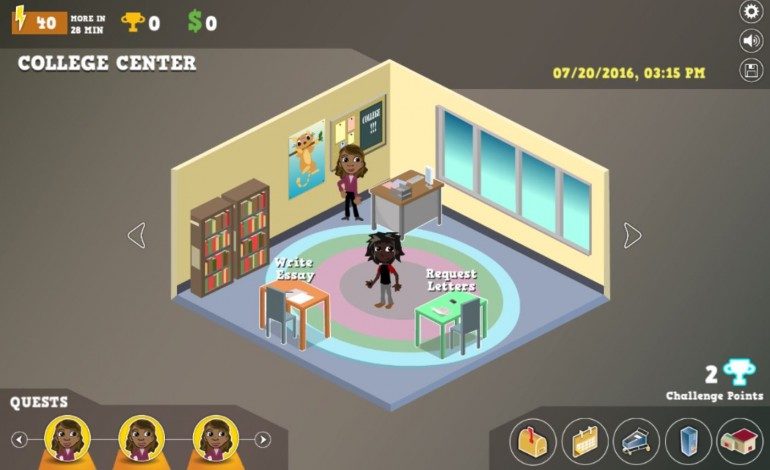

It’s back to school time, or it was a week ago, and a few weeks ago for college students. Still, for many high school seniors, it’s about time to start thinking about colleges and dealing with the nightmare that is FASFA (Federal Student Finacial Aid). The problem is that many students have no idea how to start looking for colleges. Now there is something kids can do get themselves prepared. Polygon reports.
Mission: Admission is a game developed by the Pullias Center for Higher Education and is designed to help teens get into college. According to this promotional video for the game, students role play a high school student applying to college. It works in real-time as the student walks their player through the application process. The game goes through all the major topics like meeting scholarship deadlines, applying for aid, getting letters of recommendation, taking part in extracurricular activities, and the all-important question: where should I go to college? From a gameplay perspective, the game works much like most mobile games where players have a limited amount of energy to complete tasks.
The game has been available in California since 2014, but so far it hasn’t seen a widespread release across the country. During that time Mission: Admission has seen success, with the US Department of Education awarding the Pullias Center with a 3.2 million dollar grant to fund research into the game’s effectiveness. For those that have played the game, they don’t need to see the figures to know that it works.
One student going to a school near San Francisco said,
I learned not to get scared in the future for college. I learned what to expect in college, what the requirements for each college would be.
Another student in Southern California said that before their class played the game no one talked about college.
The people that are in my classes, they didn’t really talk about college that much. For me, I’m big on college. Now I’m getting into discussions with my friends about college. It’s just so much more refreshing because they understand the stress and the struggle now [they’ve played the game].
So far, the biggest issues for the game is budget cuts and poor equipment. Amanda Ochsner, a postdoctoral research associate working on the project said that a lot of the high schools the team visits aren’t equipped to run the game with most computers not working properly.
We’re seeing a lot of digital equity issues We’ll go into high schools and find half the computers aren’t working. A specific student needs a specific computer and they don’t know what computer they need or they don’t know the login. It’s chaotic.
The good news is that the game is available online for free and when students found that out most of them were eager to go home and try it for themselves.
Play games, take surveys and take advantage of special offers to help support mxdwn.
Every dollar helps keep the content you love coming every single day.
